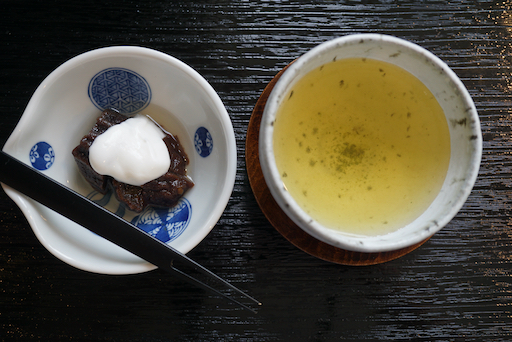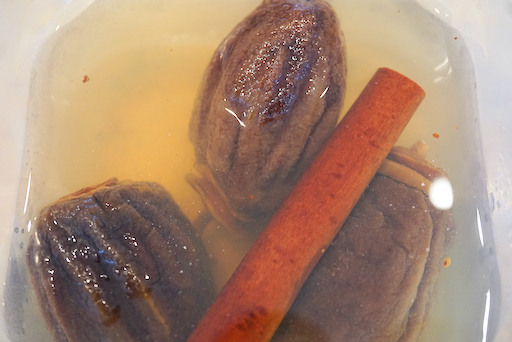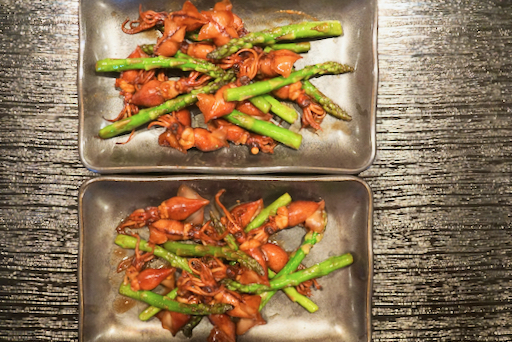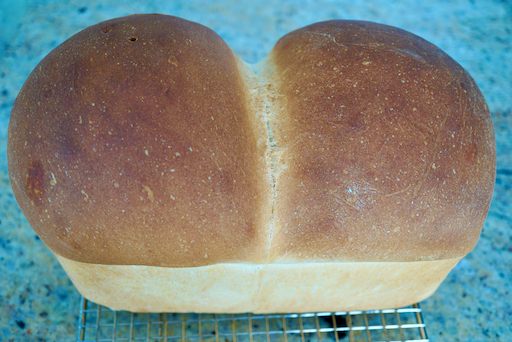Recently, we reorganized our book shelves and during this process, my wife found quite a few cookbooks which we forgot we had. One of which was a small book called "Mostly Muffins". It was published in 1984 but it appears to be still available on Amazon. As a devotee of stuffed muffins, my wife could not pass this one up. So this is a fig muffin (first picture). She managed to place the stuffing in the center without any gaping space around the stuffing.
The fig stuffing definitely gave nice slightly sweet and figgy taste and nice slightly chewy texture.
As usual, I ask my wife to take over the rest.
Ingredients:
For fig filling
1/2 lb dried figs, trimmed and chopped
1/2 cup triple sec (original recipe calls for freshly squeezed orange juice which we did not have).
3 tbs honey
1 1/2 tsp fresh squeezed lemon juice
For muffin batter
1 1/4 cup AP flour
3/4 cup whole-wheat flour
1 tsp baking powder
1/2 tsp. baking soda
1/2 tsp salt
1/2 cup unsalted butter melted and cooled
1/2 cup sugar plus 1 Tbs. molasses (original recipe calls for dark brown sugar)
1/4 cup honey
1 egg, lightly beaten
1/2 tsp orange flavoring
3/4 cup triple sec (original recipe calls for orange juice).
Double recipe:Ingredients:
For fig filling
1 lb dried figs, trimmed and chopped
1 cup triple sec (original recipe calls for freshly squeezed orange juice which we did not have).
6 tbs honey
Tbs. fresh squeezed lemon juice
For muffin batter
2 1/2 cup AP flour
1 1/2 cup whole-wheat flour
2 tsp baking powder
1 tsp. baking soda
1 tsp salt
1 cup unsalted butter melted and cooled
1 cup sugar plus 2 Tbs. molasses (original recipe calls for dark brown sugar)
1/2 cup honey
2 eggs, lightly beaten
1 tsp orange flavoring
1 1/2 cups triple sec (original recipe calls for orange juice).
Directions:
For the filling:
In as small saucepan combine the filling ingredients and bring to a boil. Reduce the heat and simmer covered for 20 minutes. If there is excess liquid remove the cover and reduce until thickened. (In this batch all the liquid was absorbed.) Cool slightly then place in a food processor fitted with a steel blade and process for 30 seconds until puréed. Set aside.
For the dough:
Liberally grease the muffin tins. In a large bowl mix the dry ingredients. In another bowl mix the wet ingredients. Add the wet ingredients to the dry ingredients. Add half the dough to the bottom of the muffin cups. Top with the fig mixture. Don’t let the fig mixture touch the side of the muffin cups. Top the fig mixture with the remaining half of the dough. The next picture shows the muffins partially assembled; 8 muffin tins are shown half filled with the fig mixture and 4 muffin tins completely assembled with the fig mixture covered. Bake in a 400 degree oven for 15 to 20 minutes until golden brown. Let cool for about 5 minutes and remove from the tins to a cooling rack.
The next picture shows the muffins just as they came out of the oven.
This is a quite unique and nice muffin. They actually came out much better than expected. I am not sure what difference substituting orange flavored liquor (triple sec) for the orange juice had but certainly the end result was very good. The muffin had a very tender texture and the fig filling added a mild sweetness. The slight crunch from the fig seeds in the fig mixture was a bit of a surprise but added an additional crunch element that was quite nice. They also provided inspiration on how to make muffins stuffed with other dried fruits...like persimmon...maybe.







































